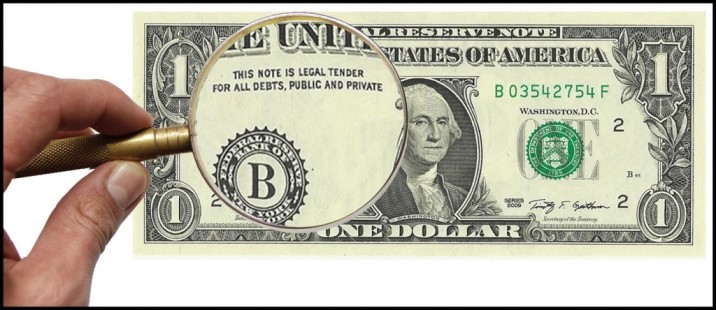Cash is dying as a payment system. And I say, “good riddance.”
Today, cash is used in less than 30% of U.S. transactions — that’s about half as much as it was used just 10 years ago. And within the next 15 years, it’s expected that cash will be used in only 10% of transactions.
The main reason for this is, of course, convenience. There is no conspiracy to eliminate cash in some nefarious effort to screw you over. The government has never forced anyone to use digital payments over cash. In fact, it’s just the opposite.
There is no federal law that requires businesses to accept cash. However, if someone owes a debt, by law, cash must be accepted. It’s explicitly printed on every single U.S. currency note.

For better or worse, cash isn’t disappearing because the government wants it that way. Paying with a card is simply faster, and no one wants to walk around with a bunch of change jingling in their pockets.
The Federal Reserve reports the total number of non-cash payments reached 174.2 billion in 2018, an increase of 30.6 billion over 2015, with debit and credit card payments leading the way. The Fed says 75.3% of transactions in 2018 were done with credit and debt cards. Yet while credit and debit card use is still on the rise, don’t count on the same cards we use today being the main payment system of the future.
The Tap-and-Go Revolution
The fastest growing payment option today is tap-and-go systems, or contactless payments. These systems use a contactless technology called NFC (near field communication). In payment cards of the future, each will contain an NFC chip and RFID antenna. When you wave them over a point-of-sale terminal, they use radio frequencies and encrypted code to complete the transaction. There’s no need to swipe or sign.
And that’s a great thing if your payment card is anything like mine. I need to get a new card at least every two years because the magnetic strip on the back wears out.
You’ve probably seen these tap-and-go systems all over already. 81% of fast food outlets have already began accepting tap-and-go at the register. Meanwhile 92% of drug stores and pharmacies have adopted the technology.
Costco, for one, introduced tap-and-go last summer. The company couldn’t be happier with the results. CFO Richard Galanti said, “For both the customer and us, it’s better because it’s faster. Plus, from a safety standpoint, it’s encrypted and more secure.”
Our analysts have traveled the world over, dedicated to finding the best and most profitable investments in the global energy markets. All you have to do to join our Energy and Capital investment community is sign up for the daily newsletter below.
Despite already being adopted by the majority of businesses, tap-and-go payment systems are still in their infancy. But here’s how big the opportunity for growth is right now: A.T. Kearney reported in 2018 that just 0.18% of point-of-sale transactions were contactless. That leaves the door wide open for growth, and for investors like you and me, that could mean big money. Fortune magazine reports:
The world of real-time payments is no longer a pipe dream. In many respects, it’s already here — and the financial system is now braced for an unprecedented wave of innovation that will change the way consumers and businesses interact.
That’s why investors like Chris DeHaemer are scrambling to position themselves in this growing market. In a new report, DeHaemer says companies involved in the tap-and-go payment market are primed to sweep up billion of dollars in profits. “The possibilities are mind blowing,” he says. “Their business model is based on collecting a cut of every digital transaction that comes through their system. My calculations lead me to believe that’s somewhere between a 1% and 2.5% cut on every single transaction.”
Now let’s do some math…
Let’s just use DeHaemer’s lowest estimate of what companies will be collecting as their “cut”: 1%.
The Federal Reserve reports the total value of non-cash payments in 2018 equaled $97.04 trillion. That means, if tap-and-go payment systems were used by 100% of the U.S. population two years ago, businesses that collect transaction fees from the technology would have raked in $970 billion.
At 2.5%, they would have brought in $2.4 trillion!
Starting to see how big tap-and-go payment systems could be?
I’m not sure if there is a bigger opportunity anywhere else in the market. As I already mentioned, only 0.18% of the population used tap-and-go systems in 2018. Just imagine how much bigger it’s going to get from here.
Chris recently made his tap-and-go report available to the public. You can read the entire thing here.
Until next time, As an editor at Energy and Capital, Luke’s analysis and market research reach hundreds of thousands of investors every day. Luke is also a contributing editor of Angel Publishing’s Bull and Bust Report newsletter. There, he helps investors in leveraging the future supply-demand imbalance that he believes could be key to a cyclical upswing in the hard asset markets. For more on Luke, go to his editor’s page.
Luke Burgess

